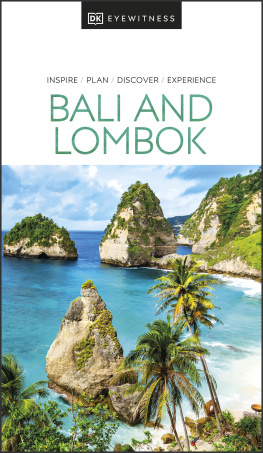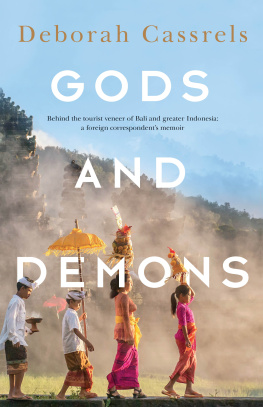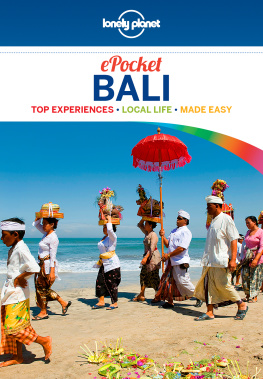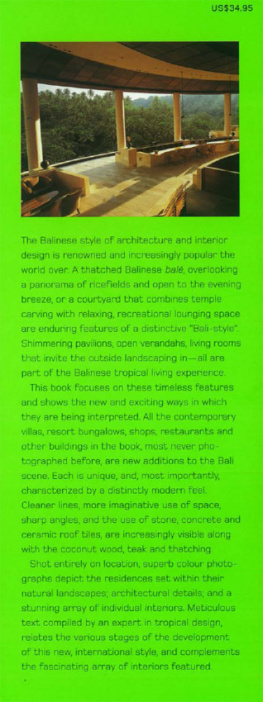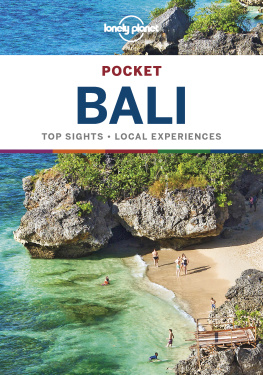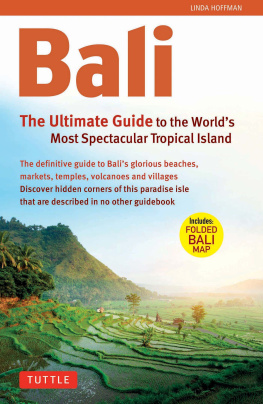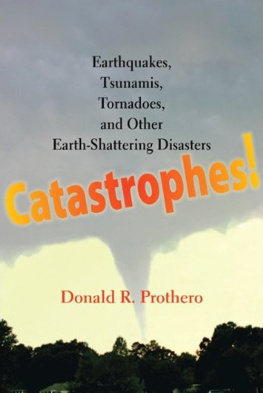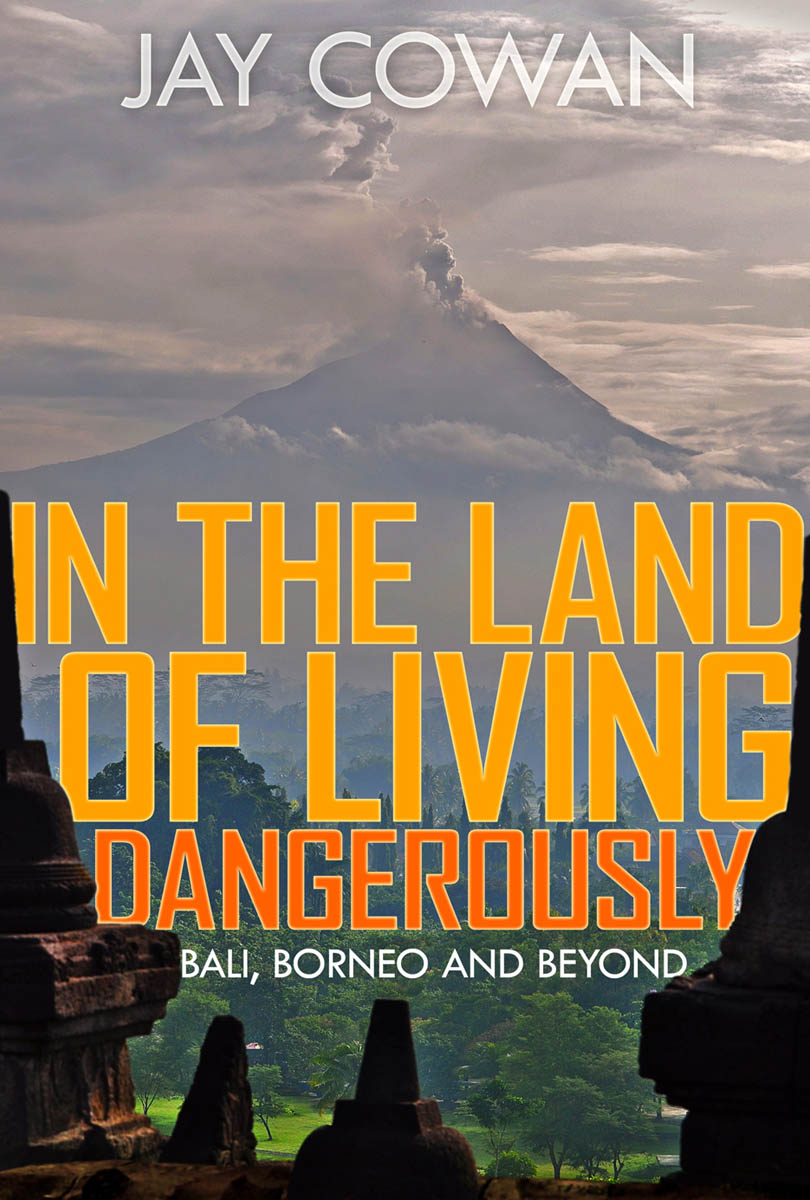IN THE LAND
OF LIVING
DANGEROUSLY
Bali, Borneo and Beyond
JAY COWAN

For my mother, Ann Cowan,
who has always been there for me.
Contents
For believe me! -- the secret for harvesting from existence the greatest fruitfulness and the greatest enjoyment is: to live dangerously! Build your cities on the slopes of Vesuvius! Send your ships into uncharted seas!
Friedrich Nietzsche 1882
P ART O NE (2006)
Chapter One Welcome to Bali!
As the ash continues to fall and stack up like the gray feathers of millions of dying birds pooling into toxic sludge around us, some of the romance of volcanoes is disappearing from our situation. Trees are snapping under the weight of the heavy rain-laden ash and crops and gardens are lying flat in the fields swamped with gritty pumice that cant be washed off no matter how hard the monsoon rain falls. People are standing in the streets, stunned and often weeping, as the rivers of Java swell with the water thats pooling up behind mud and lava dams, then bursting free to swallow entire riverbanks of homes and trees as the rioting streams break out of their channels and roar through villages.
Clouds of super-heated, six-hundred-degree poisonous gas are racing down the flanks of Mount Merapi at over 100 kilometers per hour, faster than people can drive, let alone run, and tens of thousands of survivors are crowding into emergency shelters that are themselves being overtaken by the eruptions. This is the biggest the very active volcano has gone off in recorded history, raining down misery on much of the island of Java, interfering with flights throughout the region and turning our little experiential adventure in what may be the worlds most dangerous country into the kind of life or death proposition that makes me wonder how the hell I got us into it. And how well get out.
Volcanoes are among the most destructive natural forces on earth and individual ones have more than once erupted with such violence that theyve disrupted the entire worlds weather for years and changed the course of civilizations. My wife and I like them for their less aggressive features, such as hot springs, weird mudpots and geysers, and the kind of wild energy they exude, like being around someone genuinely crazy who can be warm and friendly one moment and then suddenly go sideways on you.
Ive been around volcanoes for most of my life. I was born and spend a lot of time near Yellowstone National Park, one of the worlds largest calderas, which when it erupts can severely alter North America. The Big Island of Hawaii is another of our favorite haunts and is dominated by two massive volcanoes including one of the most active ones on earth.
So volcanoes are one of the attractions of Indonesia for my wife and I when we decide to visit in the fall of 2006. As the most volcanically active nation on earth it actually attracts some tourists because of it, many of them a form of schadenfreude watchers who cruise the world looking for disasters. That isnt us, and there are actually other good things about volcanism. Indonesia and Malaysias volcanoes are literal hotbeds of biodiversity, underwater as well as above. They also create enormous amounts of geothermal energy, and entirely new, very fertile land.
But there is admittedly an adventure travel aspect to them as well that consists of a voyeurism tinged with naivete: maybe well see a big eruption, some lava and the kind of stack-blowing that makes for dramatic photos. It could also be educational and important to our research. You cant try to talk about Indonesia without talking about volcanoes and if the opportunity presents itself to view a big one going off firsthand it should be considered.
For the moment the closest thing we have is a big new mud volcano in Java. Unlike the cute little belching mudpots in Yellowstone, however this one is devouring whole villages. And instead of being an entirely natural feature it looks like its the result of a gas-drilling blowout. Or at least thats what the Indonesian government is blaming it on, citing various companies, including Halliburton, for the fiasco thats displacing thousands of people, costing millions and filling emergency dikes and a river with poisonous mud at the rate of two hundred thousand tons a day.
Its bad timing for a big annual golf tournament being held in Nusa Dua for oil-company executives from all over the region. When I ask the club pro if any of them are talking about the incident, as theyre calling it, he turns terse and finally mumbles, The government really didnt handle that very well. The drillers asked them for help right away when they could have plugged the thing, but the government didnt respond. When I raise my eyebrows Harriet nudges me, so I change the subject.
What are those big birds up there? I ask, pointing to the distant southeast sky where several dozen large raptors, or possibly vultures, are flocking.
The pro looks up, consults with one of his ground crew and says, Ive never seen them before. Odd for a man who has spent fifteen years here, most of it outside. I hope he isnt a microcosm of the westerners who live and work here.
Meanwhile, for the moment the drilling mishap is the only volcano news in the country and we dont know volcanoes will eventually become a central part of our story. When we arrive in Bali theyre just one piece of the areas volatile mix. Mount Merapi has in fact erupted just before we get there, something it does every few years, killing half a dozen people and putting on a show. But it doesnt necessarily overshadow other trouble including the first human-to-human transmission of the bird flu in Sumatra and a 6.2 earthquake that rattled the cultural capitol of Yogyakarta. At least the quake didnt touch off another of the horrific tsunamis that killed two hundred and thirty thousand people in the region in 2004.
Indonesia has weathered natural and political disasters forever, it seems, but has been especially beset recently. Two terrorist bombings in Bali in 2002 and 2005 killed over two hundred people, received global media attention and put a severe crimp in the famous islands once-booming tourist industry. As the nation with the most Muslims in the world, Indonesia is home to some extremist elements of Islam that are carrying on the same kind of Jihad seen all over the Middle East, directed at westerners in general, and Americans and Australians specifically, for our governments roles in Iraq and Afghanistan.
Indonesia is also a desperately poor country composed of roughly eighteen thousand islands, six thousand of them inhabited and often almost autonomous, frequently referred to as virtually ungovernable and one of the most corrupt democracies on earth. Stretching from the southern tip of Thailand almost to Australia, it spans nearly five thousand kilometers and the equator, multiple cultures and ethnicities, and from the Stone Age to the current day. To most non-surfing Americans and westerners, Indonesia is probably familiar, if at all, mainly as the mother ship for Pier One and Nike products. Otherwise its most often in the news for catastrophes, including massive tectonic upheavals, terrorism, pandemic disease, regular ferry sinkings, plane crashes, political turmoil and sectarian violence. And when you include more mundane problems (Bali belly, sea snakes, insane traffic, oppressive heat and smoke), the list of Indonesian dangers is long.


